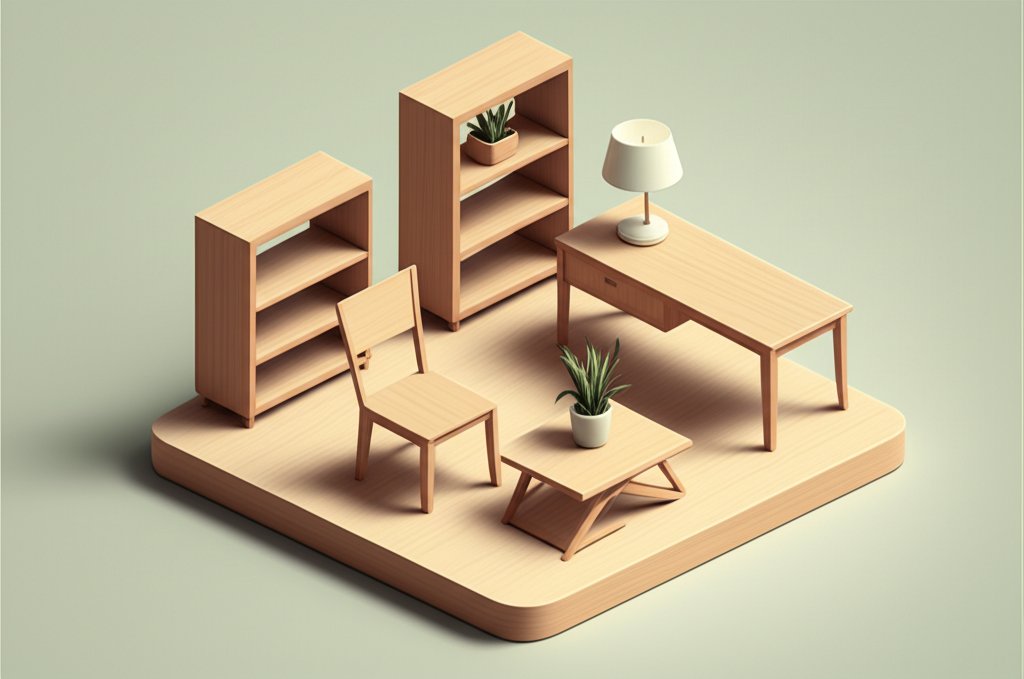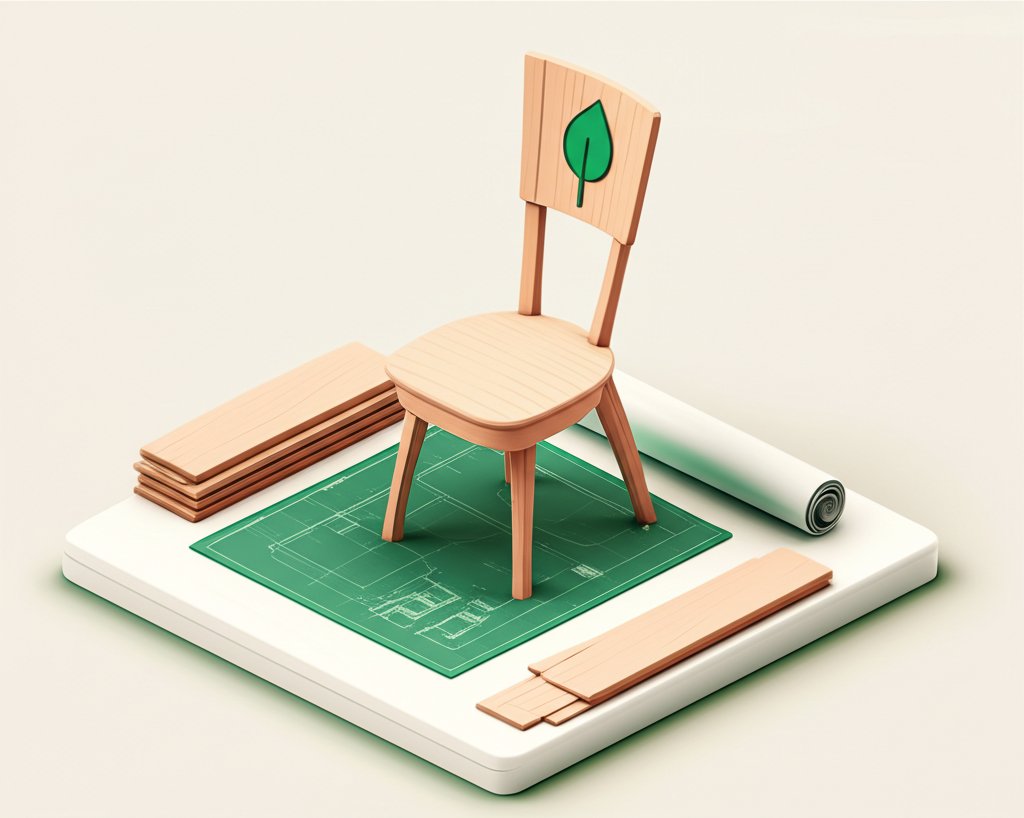Step into the timeless world of wood furniture, where every grain tells a story and every piece carries a legacy. Beyond its undeniable aesthetic appeal, wood furniture holds a treasure trove of fascinating facts about wood furniture that speak to its durability, versatility, and profound connection to nature. In an era increasingly conscious of environmental impact, understanding sustainable wood furniture is not just a trend but a necessity. This article will peel back the layers, revealing critical wood furniture facts and exploring the diverse types of wood furniture that shape our homes and lives, all while championing responsible design choices. Prepare to discover the secrets that make wood not just a material, but a cornerstone of sustainable living.
The Enduring Legacy of Wood Furniture: Unpacking Durability & Value
For millennia, wood furniture has stood as a testament to human craftsmanship and nature’s resilience. Its inherent strength and ability to gracefully age make it a preferred choice for pieces meant to last not just years, but generations.
Unmatched Longevity: Why Wood Furniture Lasts Centuries
One of the most compelling wood furniture facts is its exceptional durability. When properly cared for, solid wood pieces can indeed last for hundreds of years. This longevity stems from the unique cellular structure of wood, which provides incredible tensile strength and resistance to everyday wear and tear. Unlike particleboard or MDF, solid wood can be sanded, refinished, and repaired countless times, effectively regenerating its appearance and extending its life. This inherent ability to withstand the test of time makes wood furniture a truly sustainable choice, as it reduces the need for frequent replacements and minimizes waste.
Understanding the longevity of these pieces requires a deeper look at the techniques involved, and exploring the fascinating world of facts about furniture making can offer further insights into this enduring craft.
The Investment Advantage: How Wood Furniture Appreciates
Beyond its functional lifespan, wood furniture often proves to be a wise investment. High-quality, well-maintained pieces can retain or even increase their value over time, becoming cherished family heirlooms. This is particularly true for furniture crafted from rare or historically significant woods, or those featuring exceptional craftsmanship. The timeless appeal of wood ensures that it rarely goes out of fashion, making it a stable asset in your home decor. From antique mahogany desks to bespoke oak dining tables, these pieces offer a tangible connection to the past and a lasting aesthetic for the future.
Sensory Wonders: The Aroma and Texture of Authentic Wood
Another delightful aspect among facts about wood furniture is its multisensory appeal. Each species boasts a distinct aroma, from the warm, spicy notes of cedar to the subtly sweet fragrance of cherry or the earthy scent of oak. These natural compounds not only enhance the ambiance of a room but can also evoke a sense of calm and connection to nature. Furthermore, the tactile experience of real wood furniture is unparalleled. The smooth, cool surface of a polished walnut table, the slightly uneven texture of reclaimed pine, or the deep grains of a rustic elm piece – each offers a unique feel that synthetic materials simply cannot replicate.
A Spectrum of Style: Exploring Types of Wood Furniture
The vast array of wood species available means an equally diverse range of aesthetic and functional possibilities for wood furniture. Understanding the different types of wood furniture is key to making informed choices for your home.
Hardwoods vs. Softwoods: Understanding the Core Differences
When discussing types of wood furniture, the primary distinction often lies between hardwoods and softwoods, a classification based on the tree’s reproductive structure, not necessarily its literal hardness.
- Hardwoods: These come from deciduous trees (those that lose their leaves in autumn), such as oak, maple, cherry, walnut, and mahogany. They are generally denser, more durable, and resistant to dents and scratches, making them ideal for high-traffic furniture pieces. Hardwoods typically have richer, more complex grain patterns and tend to be more expensive due to their slower growth rate.
- Softwoods: Derived from coniferous trees (evergreens) like pine, cedar, and spruce, softwoods grow faster, making them more economical. While generally less dense than hardwoods, many softwoods are still perfectly suitable for furniture, especially for rustic or farmhouse styles. They are lighter in color and often have simpler, straighter grain patterns. Pine, for instance, is a popular choice for its affordability and ease of working.
Popular Wood Furniture Types and Their Characteristics
Delving deeper into specific types of wood furniture reveals a world of unique properties:
- Oak: Renowned for its strength and prominent grain. Available in red and white varieties, oak is incredibly durable and resistant to warping, making it a classic choice for dining tables, chairs, and cabinets.
- Maple: A very hard and strong wood, maple boasts a fine, even grain and a light, creamy color that can be easily stained to mimic other woods. It’s often used for contemporary designs and durable surfaces like butcher blocks.
- Cherry: Valued for its smooth, closed grain and warm, reddish-brown hue that deepens beautifully with age and exposure to light. Cherry is a sophisticated choice for traditional and elegant furniture.
- Walnut: A luxurious hardwood with rich, dark brown tones and often beautiful, swirling grain patterns. Walnut is strong, stable, and excellent for high-end furniture, carvings, and veneers.
- Mahogany: Famous for its reddish-brown color, fine grain, and lustrous finish. Mahogany is durable and resistant to wood rot, historically favored for fine antique furniture.
- Teak: An exceptionally durable and weather-resistant hardwood with natural oils that repel water and pests. Teak is highly prized for outdoor furniture, boat building, and indoor pieces where longevity is paramount.
- Pine: A lightweight and affordable softwood with a yellowish-white color and distinctive knots. Pine is popular for rustic, country, and casual furniture, often used in children’s furniture.
- Ash: A strong, flexible hardwood with a prominent, open grain similar to oak but lighter in color. Ash is often used for bentwood furniture, tool handles, and modern designs.
- Birch: A fine-grained hardwood that is strong and takes stains well, often used to simulate more expensive woods like cherry or maple. It’s a versatile choice for a range of furniture styles.
- Bamboo: Technically a grass, not wood, but widely used for furniture. It’s incredibly fast-growing, strong, and light, making it an excellent sustainable alternative for both indoor and outdoor furniture.
Engineered Woods: A Modern Alternative (Briefly)
While our focus is primarily on solid wood furniture facts, it’s worth briefly noting engineered wood products like plywood, MDF (Medium-Density Fiberboard), and particleboard. These are created by binding wood fibers, veneers, or particles with adhesives. They offer stability, affordability, and can be used in conjunction with solid wood to create diverse types of wood furniture, often for hidden components or budget-friendly options.
Beyond Beauty: The Compelling Facts About Wood Furniture
Beyond its material composition and aesthetic appeal, wood furniture is rich with intriguing history, unique properties, and surprising environmental benefits.
The Ancient Roots of Wood Furniture: From Status Symbol to Everyday Art
The history of wood furniture stretches back thousands of years. Early civilizations, including the Egyptians, Romans, and Chinese, used wood to craft functional and decorative pieces. In Ancient Egypt, for example, chairs were much more than seating; their height and elaborate decoration often signified the social status of the owner. Fast forward to the Renaissance, and intricate carving and joinery techniques elevated woodworking to an art form. The evolution of wood furniture reflects human history, showcasing changes in technology, culture, and design, offering a fascinating perspective on facts about wood furniture and human innovation.
Wood’s Natural Climate Control: How it Breathes
A lesser-known but significant of the wood furniture facts is its hygroscopic nature – meaning wood naturally absorbs and releases moisture from the air. This property allows wood furniture to act as a natural humidity regulator in your home. In humid conditions, wood absorbs moisture, and in dry conditions, it releases it, helping to stabilize indoor climate. This natural “breathing” also contributes to better indoor air quality by preventing excessive dryness or dampness, and unlike synthetic materials, wood doesn’t off-gas harmful chemicals.
Unique Grain Patterns: Wood’s Fingerprint
Every single piece of wood furniture is unique, thanks to its distinct grain pattern. The grain is formed by the tree’s growth rings and the arrangement of its wood cells, making it like a natural fingerprint. Factors like the tree species, its age, growing conditions, and how the wood is cut (e.g., plain-sawn, quarter-sawn, rift-sawn) all contribute to the final appearance of the grain. This natural variation is what gives wood furniture its inimitable character and charm, ensuring no two pieces are ever exactly alike.
Repairability and Restoration: A Sustainable Cycle
Unlike many modern materials that are designed for obsolescence, wood furniture is inherently repairable and restorable. Scratches can be sanded, dents can be filled, and finishes can be reapplied. This capacity for renewal is a huge sustainability advantage. Instead of discarding a damaged piece, it can be lovingly restored, extending its lifespan indefinitely and preventing it from ending up in a landfill. This focus on repair and reuse is a core tenet of circular design and a key among the many wood furniture facts that highlight its environmental superiority.
Crafting a Greener Future: The Power of Sustainable Wood Furniture
The environmental consciousness surrounding our choices extends deeply to our furnishings. Sustainable wood furniture offers a beautiful way to reduce our ecological footprint while investing in quality.
What Makes Sustainable Wood Furniture Truly Green?
Sustainable wood furniture goes beyond simply being made of wood. It encompasses a holistic approach to sourcing, production, and lifecycle. Key characteristics include:
- Responsible Forestry: Wood is sourced from responsibly managed forests where trees are harvested at a pace that allows for natural regeneration, protecting biodiversity and ecosystems.
- Low Environmental Impact Production: Manufacturing processes minimize waste, conserve energy, and avoid harmful chemicals in glues, stains, and finishes (e.g., low VOCs – volatile organic compounds).
- Durability and Longevity: The furniture is built to last, reducing the need for frequent replacement and thus minimizing resource consumption and landfill waste.
- Carbon Sequestration: Trees absorb carbon dioxide as they grow, and this carbon is stored within the wood even after it’s turned into furniture, effectively locking it away for the lifespan of the piece. Choosing wood over materials with higher embodied energy can significantly reduce a product’s carbon footprint.
Key Certifications to Look For When Buying Sustainable Wood Furniture
To ensure you’re truly investing in sustainable wood furniture, look for official certifications:
- FSC (Forest Stewardship Council): This is the gold standard for sustainable forestry. FSC-certified products come from forests managed in an environmentally appropriate, socially beneficial, and economically viable way.
- PEFC (Programme for the Endorsement of Forest Certification): Another widely recognized certification that promotes sustainable forest management through independent third-party assessments.
These labels provideassurance that the wood used in your furniture has been sourced ethically and responsibly, contributing to global forest health.
The Environmental Benefits of Choosing Sustainable Wood Furniture
Opting for sustainable wood furniture delivers numerous environmental advantages:
- Renewable Resource: Wood is a naturally renewable resource, unlike fossil-fuel-derived plastics or mined metals, when forests are managed correctly.
- Low Manufacturing Impact: Processing wood consumes significantly less energy compared to producing steel, aluminum, or plastic.
- Biodiversity Protection: Responsible forestry practices associated with sustainable wood help protect forest ecosystems, wildlife habitats, and water quality.
- Reduced Waste: The durability and repairability of wood furniture mean fewer items end up in landfills, contributing to a circular economy.
By understanding these facts about wood furniture and its sustainable aspects, consumers can make powerful choices that benefit both their homes and the planet.
Preserving Your Investment: Essential Care for Wood Furniture

To truly capitalize on the longevity and beauty offered by wood furniture, proper care is paramount. A little effort goes a long way in ensuring your pieces remain stunning for generations.
Protecting Your Wood Furniture: Daily Practices
- Dust Regularly: Use a soft, lint-free cloth (microfiber is excellent) to gently dust surfaces. Dust can become abrasive and scratch the finish over time.
- Wipe Spills Immediately: Liquids can warp, stain, or damage wood finishes. Blot spills promptly with a clean, dry cloth.
- Avoid Direct Sunlight and Heat: Prolonged exposure to direct sunlight can fade and dry out wood, leading to cracking. Coasters and placemats should always be used to protect surfaces from hot items and moisture rings.
- Use Protective Pads: Felt pads under accessories and objects can prevent scratches. Avoid placing plastic or rubber directly on wood for extended periods, as chemicals in these materials can react with and damage the finish.
- Maintain Stable Humidity: As wood breathes, extreme fluctuations in humidity can cause it to expand or contract, leading to cracking or warping. A humidifier or dehumidifier can help maintain a stable environment, ideally between 40-50% relative humidity.
Maintenance for Longevity: When and How to Treat
- Clean Gently: For deeper cleaning, use a damp cloth with a mild, wood-specific cleaner, then immediately wipe dry. Avoid harsh chemical cleaners, silicone-based polishes, or abrasive materials.
- Polish or Wax Periodically: Depending on the finish, wood furniture benefits from occasional polishing (with a non-silicone furniture polish) or waxing to nourish the wood and protect the finish. Always follow the manufacturer’s recommendations for your specific type of wood and finish.
- Attend to Scratches and Dents: Minor scratches can often be buffed out or camouflaged with touch-up pens or furniture crayons. Deeper damage might require professional restoration, which is a worthwhile investment given the long lifespan of quality wood pieces.
By integrating these care practices, you’re not just preserving a piece of furniture; you’re nurturing a timeless artifact and honoring the many wood furniture facts that attest to its enduring value.
Conclusion

The journey through the world of wood furniture reveals far more than just material and craftsmanship. We’ve uncovered compelling wood furniture facts, from its unmatched durability and investment potential to its rich historical significance and unique sensory appeal. We’ve explored the diverse types of wood furniture, understanding how different species offer distinct characteristics and aesthetic possibilities. Crucially, we’ve shone a light on sustainable wood furniture, emphasizing its vital role in fostering a greener future through responsible sourcing, reduced environmental impact, and enduring design.
Choosing wood furniture is an act of appreciation—for nature’s artistry, human ingenuity, and the promise of a lasting legacy. It’s an investment in a piece that will evolve with your home, tell its own story, and stand the test of time, proving that beauty and sustainability can, and should, go hand-in-hand. Make informed choices, care for your pieces, and truly uncover wood furniture facts: sustainable design secrets for a home that resonates with elegance and environmental integrity.
FAQ
Is wood furniture more durable than other types?
Yes, high-quality wood furniture, particularly pieces made from hardwoods like oak, maple, or walnut, is renowned for its exceptional durability. When properly maintained, it can last for centuries, often outperforming furniture made from synthetic materials or engineered woods in terms of longevity and resilience to daily wear and tear. Its ability to be repaired and refinished also contributes to its superior lifespan.
What are the most common types of wood furniture?
The most common types of wood furniture are typically made from hardwoods such as oak, maple, cherry, walnut, ash, and mahogany. Popular softwoods include pine and cedar, often used for more rustic or casual pieces. Each type offers distinct characteristics in terms of grain, color, hardness, and cost, catering to a wide range of design preferences and functional needs.
How can I identify sustainable wood furniture?
To identify sustainable wood furniture, look for certifications from reputable organizations like the FSC (Forest Stewardship Council) or PEFC (Programme for the Endorsement of Forest Certification). These labels indicate that the wood has been sourced from responsibly managed forests. Additionally, consider furniture made from reclaimed or recycled wood, or pieces that use low-VOC (volatile organic compound) finishes, which minimize environmental impact during production.
What are some extraordinary wood furniture facts about its history?
One extraordinary wood furniture fact from history is that in Ancient Egypt, the height of a chair’s legs was directly correlated with the owner’s social status, with higher legs indicating greater prestige. Throughout history, wood furniture has served not just as functional items but as powerful symbols of wealth, power, and cultural artistry, reflecting technological advancements and evolving design aesthetics across civilizations.
Does wood furniture require a lot of maintenance?
While wood furniture benefits from regular care to maintain its beauty and longevity, it doesn’t necessarily require “a lot” of maintenance. Basic care involves regular dusting, immediate wiping of spills, avoiding direct sunlight and excessive heat, and using protective pads. Occasional polishing or waxing, according to the furniture’s finish, can also help nourish the wood. With consistent, simple care, your wood furniture can remain pristine for generations.
Why is wood furniture considered a good investment?
Wood furniture is considered a good investment for several reasons: its unparalleled durability means it lasts for generations; its timeless aesthetic ensures it rarely goes out of style; and quality pieces can often retain or even appreciate in value over time. Furthermore, its repairability means it can be restored rather than replaced, extending its life and offering long-term value that often outweighs the initial cost.










